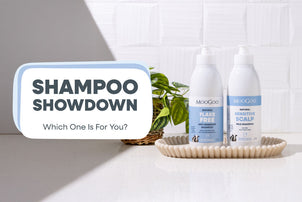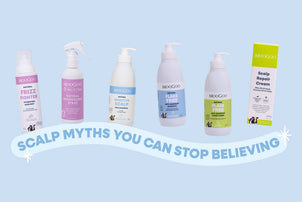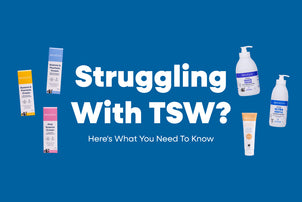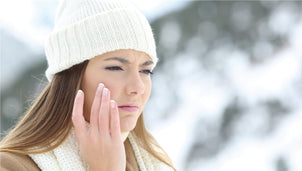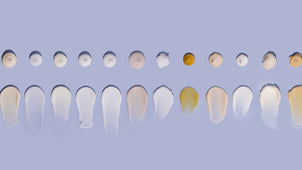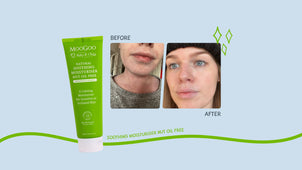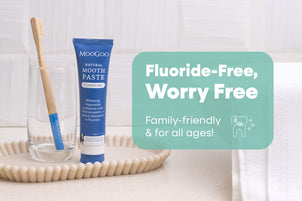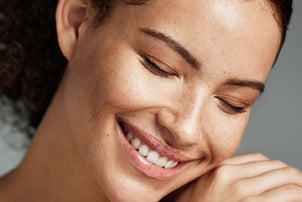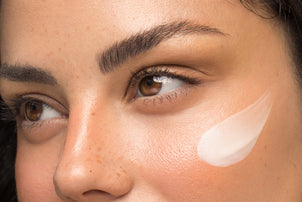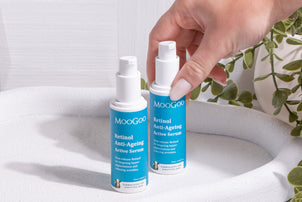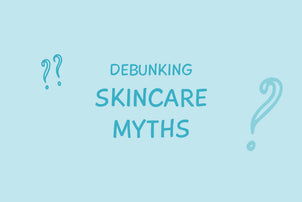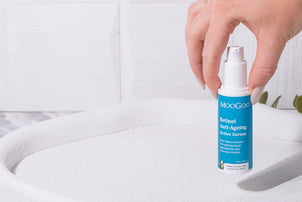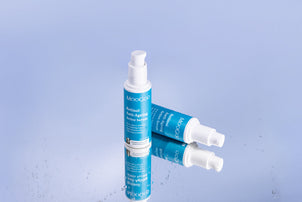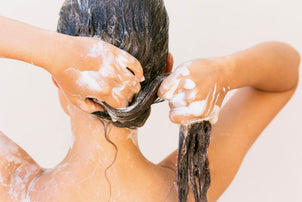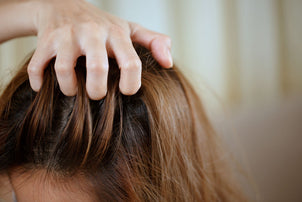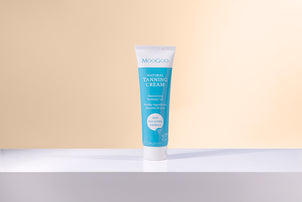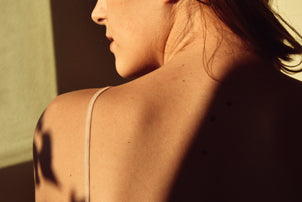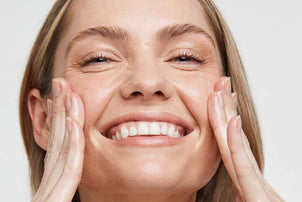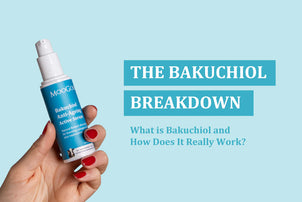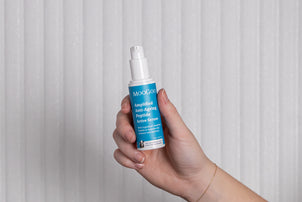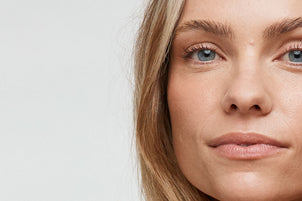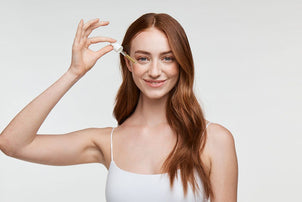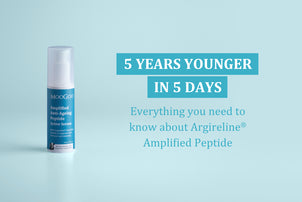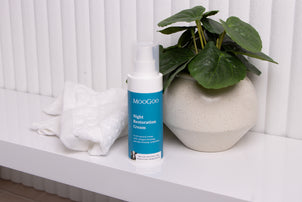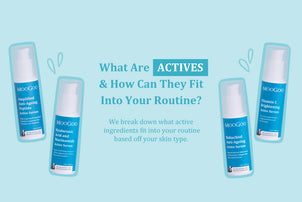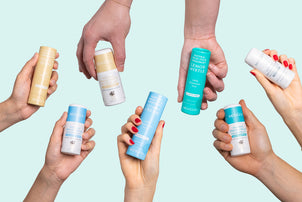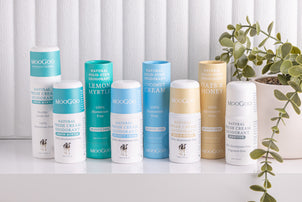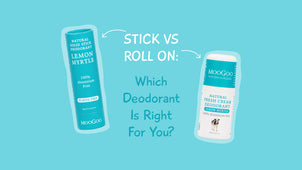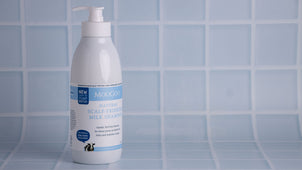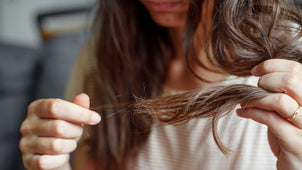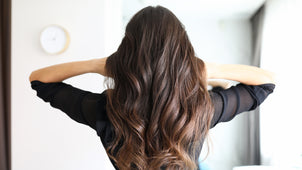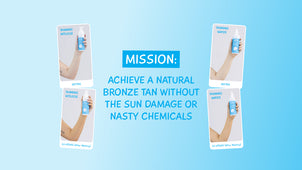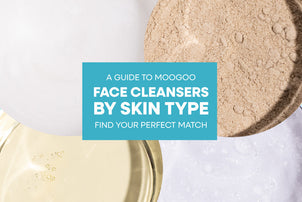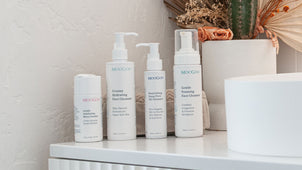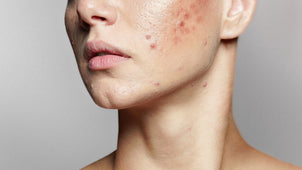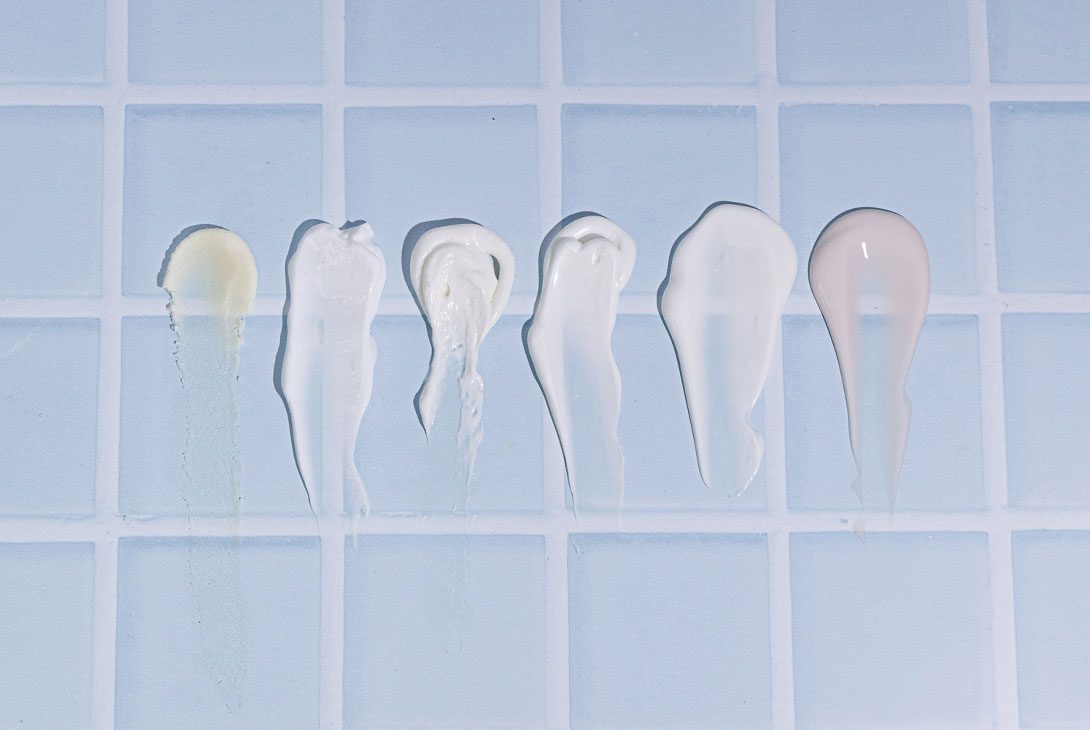
5 Misunderstood Myths About Moisturisers
We’ve said it before, and we’ll say it again: “sharks have no bones, they just have cartilage! They’re practically giant ears"…. Wait no, that’s not what we wanted to say?... Oh right, here it is! “What you put ON your body is just as important as what you put IN.”

We think you all know by now that it's the body's largest organ. Skin does a whole lot of important things, but in a very small nutshell, it provides a protective barrier between us and the outside world. It keeps things out, keeps things in, but it's also a permeable layer that allows for some penetration. But we all know this already or we wouldn't be reading this article about moisturisers, right?
Moisturisers are widely used among the human population to help keep their skin hydrated. Dry skin by itself isn't a medical worry, but it can become sore, tender and often itchy, making skin more susceptible to issues like eczema, and can also lead to premature ageing. Adding water and oils to the skin (the basic recipe for all moisturisers) helps replenish moisture levels with the addition of nourishing ingredients, but also helps limit water loss, the main cause of consistent dryness.
OK, so you're sold on the idea of moisturising, but with a billion choices to choose from, understandably, you may have questions about who, what, where, why and how. Lucky for you, we have all the answers, but since we're all busy these days, here are the top 5 most asked questions about moisturiser, other than “oh my god which one do I use?”. But we can help with that too, in this blog post here.

Should I apply moisturiser to damp skin?
Long answer: well, there was once a time where… you know what, short answer: YES, and here’s why. Imagine a desert. Woah, it’s hot in here. Now imagine the ground of a desert, cracked and withered (same here desert, same here). Now, if you were to take a bucket of water and throw it on the desert ground, it would sit on the top of the ground in a giant puddle. It would absorb slowly, and more likely be evaporated instead. Now imagine if it rained the night before. Imagine the ground all permeable and moist (sorry about the word choice).
If you threw the bucket of water down now, it would disappear much quicker. This is because when the surface is damp, it allows for better absorption. So, the best way to moisturise is to get covered in your cream of choice straight after showering or washing your face. But don't confuse damp skin for wet skin, towel dry first people, and do it gently!

Can you use the same moisturiser on your face as your body?
We actually don't get this question a lot but included it anyways because of the misconceptions that marketing has made. The answer is a bit of yes and a bit of no. We know, super confusing but hear us out. It's a good rule of thumb is to think of your eye skin as tissue paper (and the skin in your armpits funnily enough), your face skin as regular paper, and your body skin as cardboard. This is to show you that parts of the body are more delicate than others, and not everything out there is suitable for all three. But it's also important to be discerning and realise that 'hand cream' might not be (depending on the ingredients used, of course) much different than 'body' cream or 'foot cream' and who needs a different cream specifically for their decolletage?
In general, most generic body moisturisers are made with very average ingredients to make skin feels smooth and cover a large area (the largest organ). Without providing much in the way of hydration, there often isn't much noticeable difference in the skin over time. They can also be quite heavy, so not the most ideal to wear under makeup and can leave you with some serious face shine. A lot of body moisturisers are also made with powerful penetration enhancers based on Glycols and PEGs (essentially solvents) that help the cream penetrate the top layers of the skin, so they don’t feel as greasy. Creams that are designed to be used around the eyes generally won’t be made with such strong penetration enhancers because the skin under the eye is so thin and delicate, and can be quite sensitive.
So, we ask, why should the face get all the love and the body get a daily dose of chemicals? (Yes, we know everything is a chemical, including water…) No matter where the moisturiser will be slathered, face or foot, we choose not to use any of these powerful penetration enhancers in anything we make. We do this not only to avoid exposure to those kinds of ingredients but also because there are natural ingredients available that can perform the same function. These include natural oils like Olive Oil and Liposomes to deliver anti-ageing actives into the skin where they can work and make a difference.
Looking at things the other way around, it's not practical to use a 'face moisturiser' on your body. The reason for this is not because you shouldn't, but mostly because of the cost. If you haven't noticed, face moisturisers tend to cost more than body moisturisers. The reason for this is because people are willing to pay more for anything that touches their face, and because of the ingredients that go into them. Evidence-based ingredients can be expensive, especially anti-ageing ones. If you've got the MOO-lah to lather yourself in face creams, by all means, after all, why should the face get all the love? We just don’t think it’s the best bang for your buck when you're on a budget.
Are your cows real?
How dare you. We don’t have cows and our products aren’t made of milk. We called ourselves MooGoo as the first cream we ever made was based on a cream to repair cow udders…ironic that it works a lot better than most human creams back then!

Can you use a serum instead of moisturiser?
Serums are designed to get a higher concentration of beneficial and ingredients onto and into your face to target specific skin concerns. They can be hydrating as well, but generally their focus is to deliver the GOO-ds deep into the skin so they can work most effectively. We make a few of these now.
Moisturisers are meant to replenish the skin with the addition of moisturising ingredients and seal in hydration. They work to strengthen the skin’s natural protective barrier, keeping good things in and bad things out. Serums also tend to be thinner in texture and consistency than moisturisers, so following the application of a serum with a moisturiser makes sense.
Simple answer: Whatever floats your skin’s boat! Serums and moisturisers were designed to do different things which is why we recommend using both, but neither one is better than the other, instead, they work best synergistically. If you like the way your skin feels when you just use a serum, do that! Not into serums and happy with what your moisturiser provides? That’s fine too! There’s no one way to do skincare, it’s such a personal thing, and everyone has their own goals, concerns, budgets, and beliefs around it. The only thing we really suggest is to provide your skin with moisture of some kind daily as it’s your best ongoing defence against skin ageing and other skin troubles.

What is the difference between a lotion and a moisturiser?
The debate between lotions and moisturisers has been met with unparalleled consistency. And that’s all there is to it, consistency. A lotion has a thinner consistency, often lighter easier to rub into the skin. A lotion also feels lighter on the skin, making it more convenient to use consistently in warmer climates, especially all over the body. But don’t be fooled into thinking that ‘lighter’ means ‘less’. Our Fast-Hydrating Lotion is the latest addition to our moisturiser range and the perfect example of a lotion with heavyweight benefits. If your cream is a bit on the heavier side, that’s not a bad thing either. The warmth and friction applied in rubbing it into the skin is great for skin health and helps very hydrating ingredients melt into the skin.
Moving right along. Moisturisers and creams tend to refer to the middleweight class of hydrators. They tend to be thicker and heavier, as well as more luscious and creamier than a lovely lotion. This is because they come with a higher concentration of oils to deeply nourish, nurture and protect dry skin. It can take a bit more elbow grease to get them rubbed in (you’re welcome for the workout). Our Skin Milk Udder Cream and Full Cream Moisturiser are perfect examples of a healthy cream and a moisturiser for all ages and skin types. Beyond all that you’ll find the balms. They often come in a very thick or solid form like our Shea Sorbet Butter Balm and requiring body heat to melt it before it can be absorbed into the skin.
Lotions, moisturisers, creams and balms are all great options to moisturise skin, so it really depends on your individual skin needs, personal preference and what your skin is going through. Hopefully, we cleared up some of the complication.

Why won’t my moisturiser sink in?
A moisturiser that won’t sink in, won’t do anything…let that sink in! There could be many reasons why your moisturiser isn’t sinking in properly, so let’s go through a few of these.
It could be that you have a layer of dead skin on your body and need to do some exfoliation. This is one of those jobs that everyone wants done but no one likes to do. A coffee or salt scrub can work wonders and there are a ton of homemade recipes online if you’re feeling crafty. Sloughing off dead skin will make it feel softer and look better, the perfect canvas for a natural tan using natural ingredients. A shameless plug for our Gradual Tanning Moisturiser.
Another factor to consider is what your moisturiser of choice is made of. Looping back to the permeability of skin, some things just never make it through the skin and these ingredients will sit on top of the skin acting like a barrier. Barrier creams have their place and purpose, mostly to protect skin, seal in moisture and prevent water loss, but if your moisturiser is made with the cheap stuff like petroleum jelly or mineral oils (both derived from petroleum btw) they can make your skin feel soft on the surface, but can also feel heavy, greasy and slimy.
Some ingredients also take longer to absorb into the skin than others depending on their molecular size and compatibility with the skin. This is the case for face oils and balms made with Shea Butter, so it’s advisable to think about the time-of-day certain products are being applied. Thicker things like oils and balms are generally best applied at night where they can sink in slowly, while lighter lotions and serums are great for easy, daytime application.
Do I get a reward for finishing the article?
Yes, you do! The reward of knowledge and information you can share with your friends!



